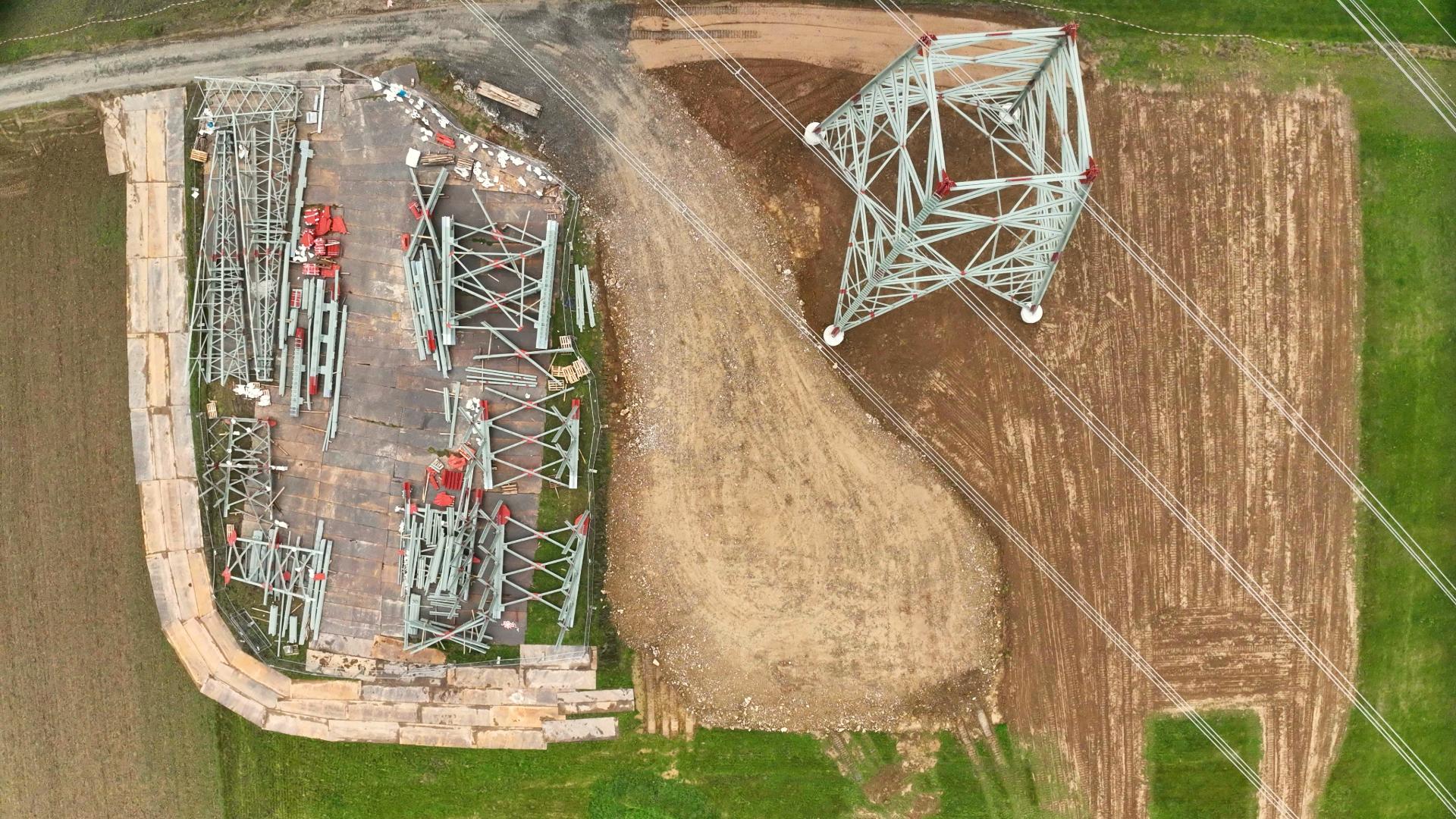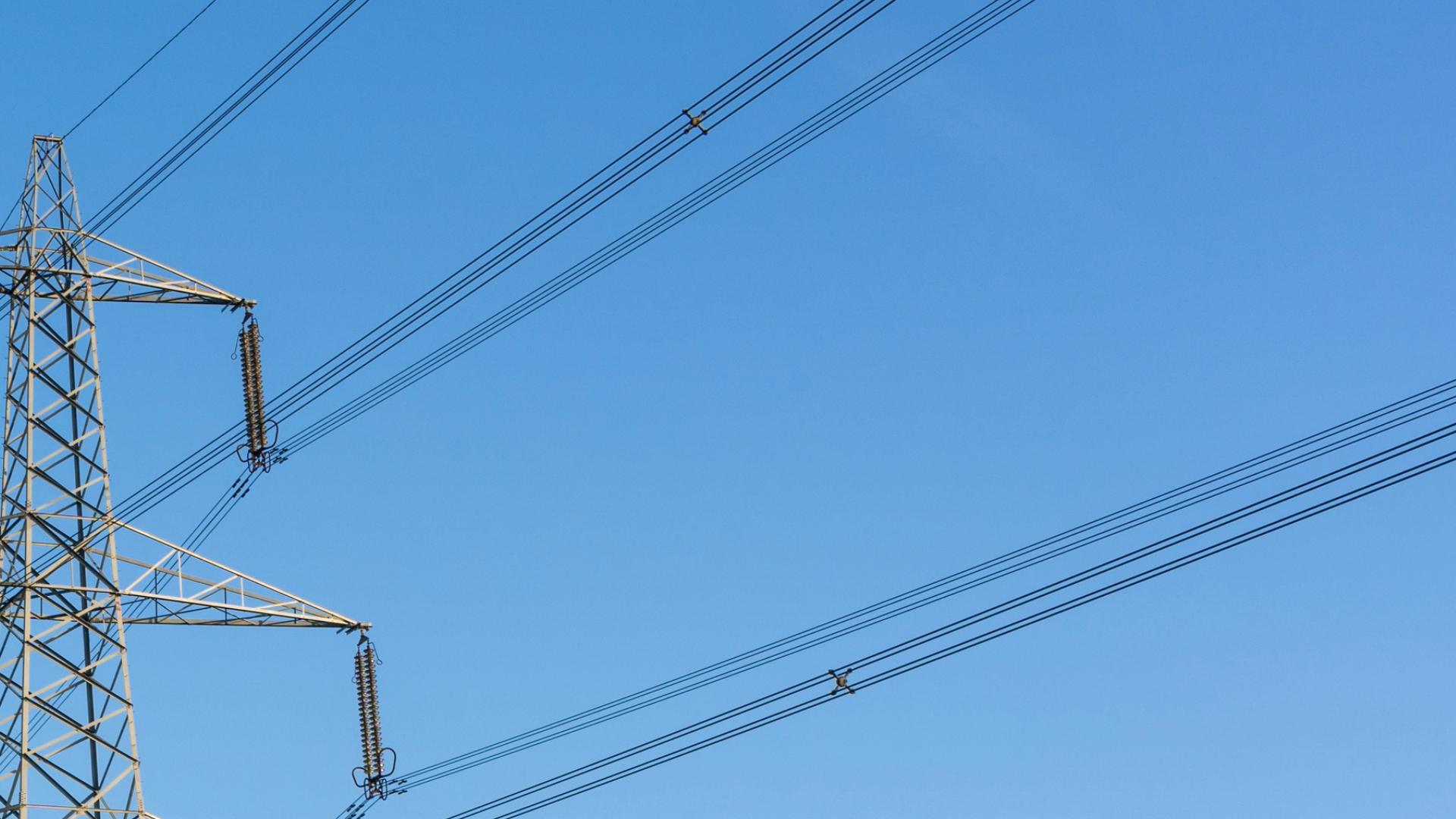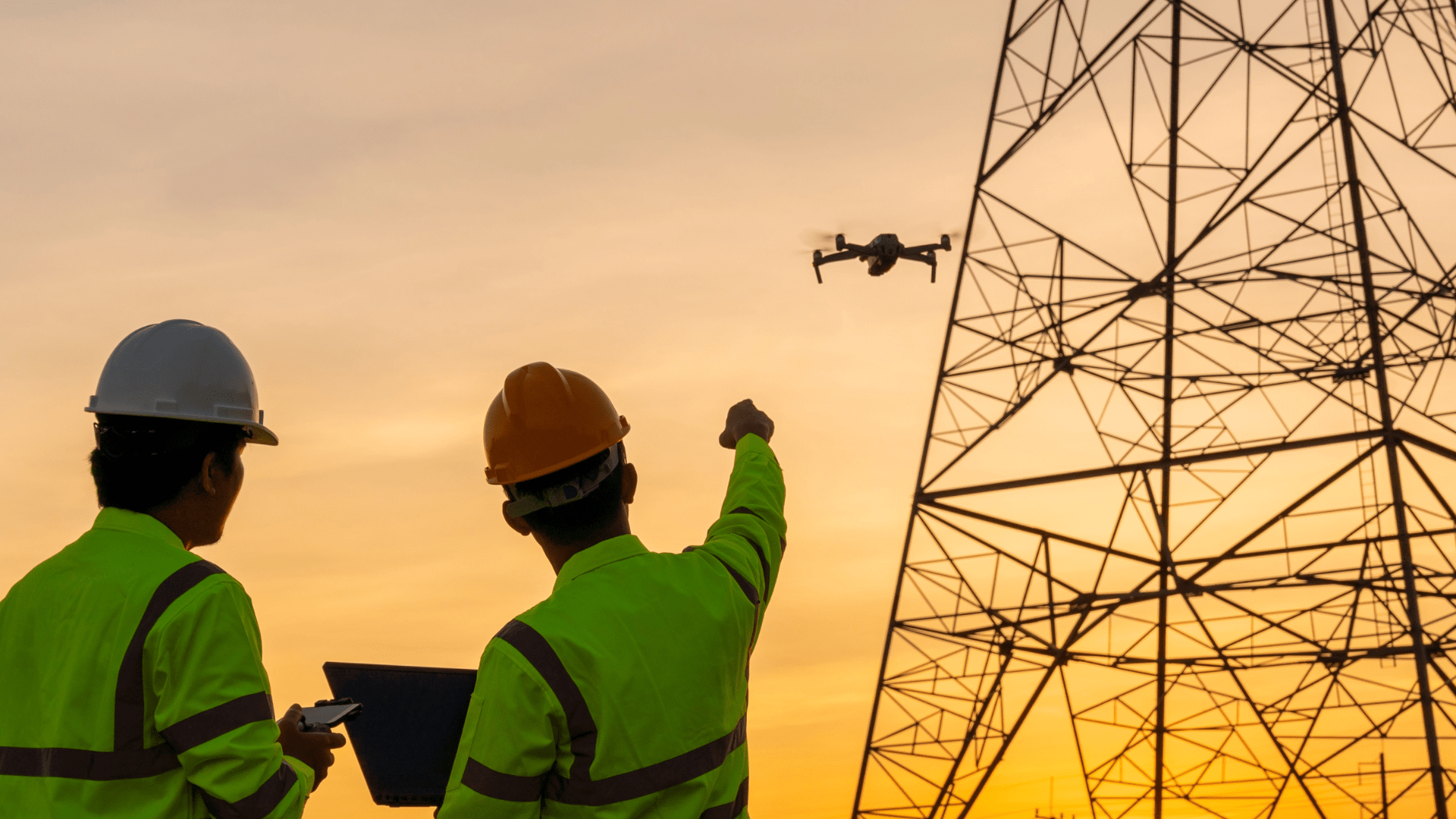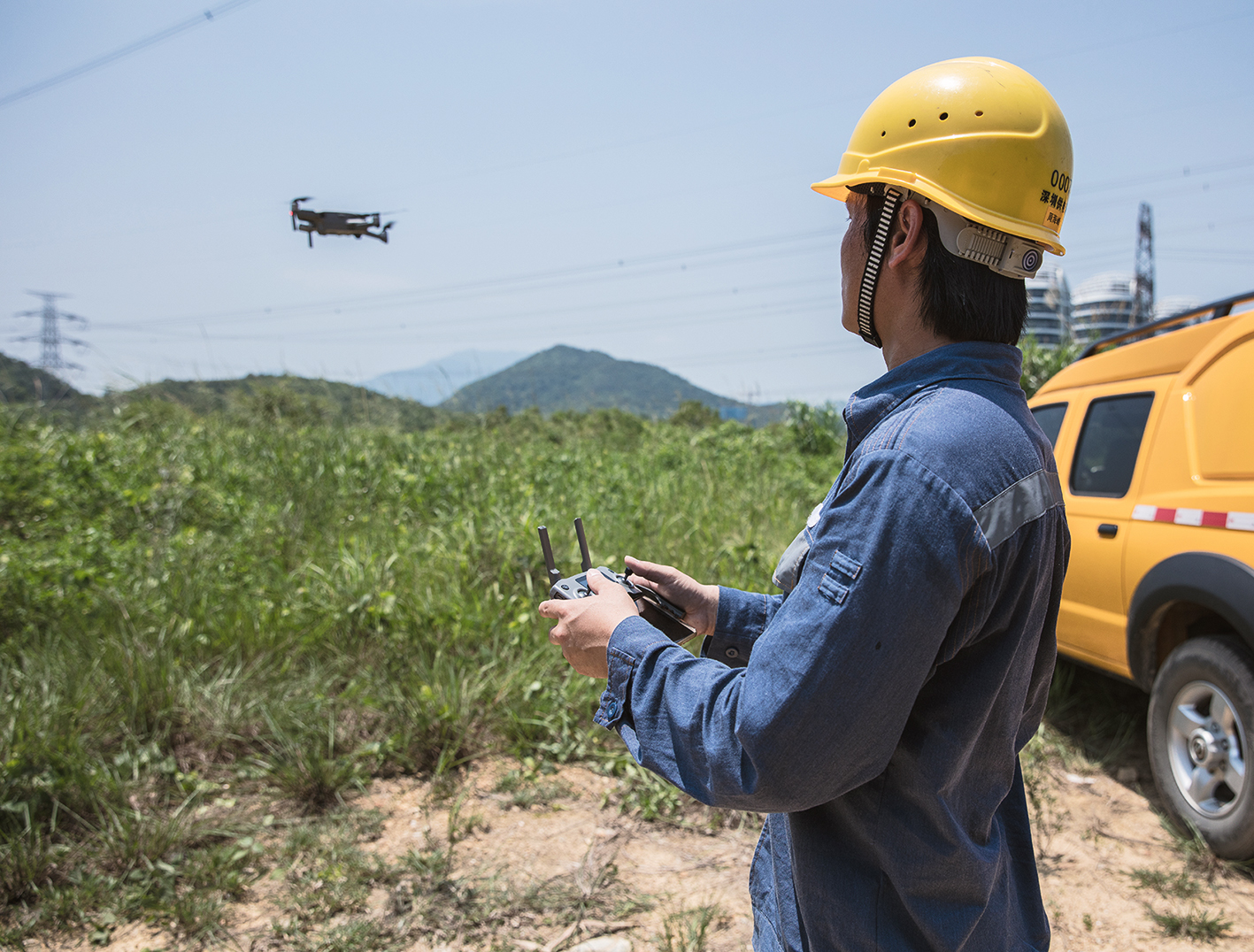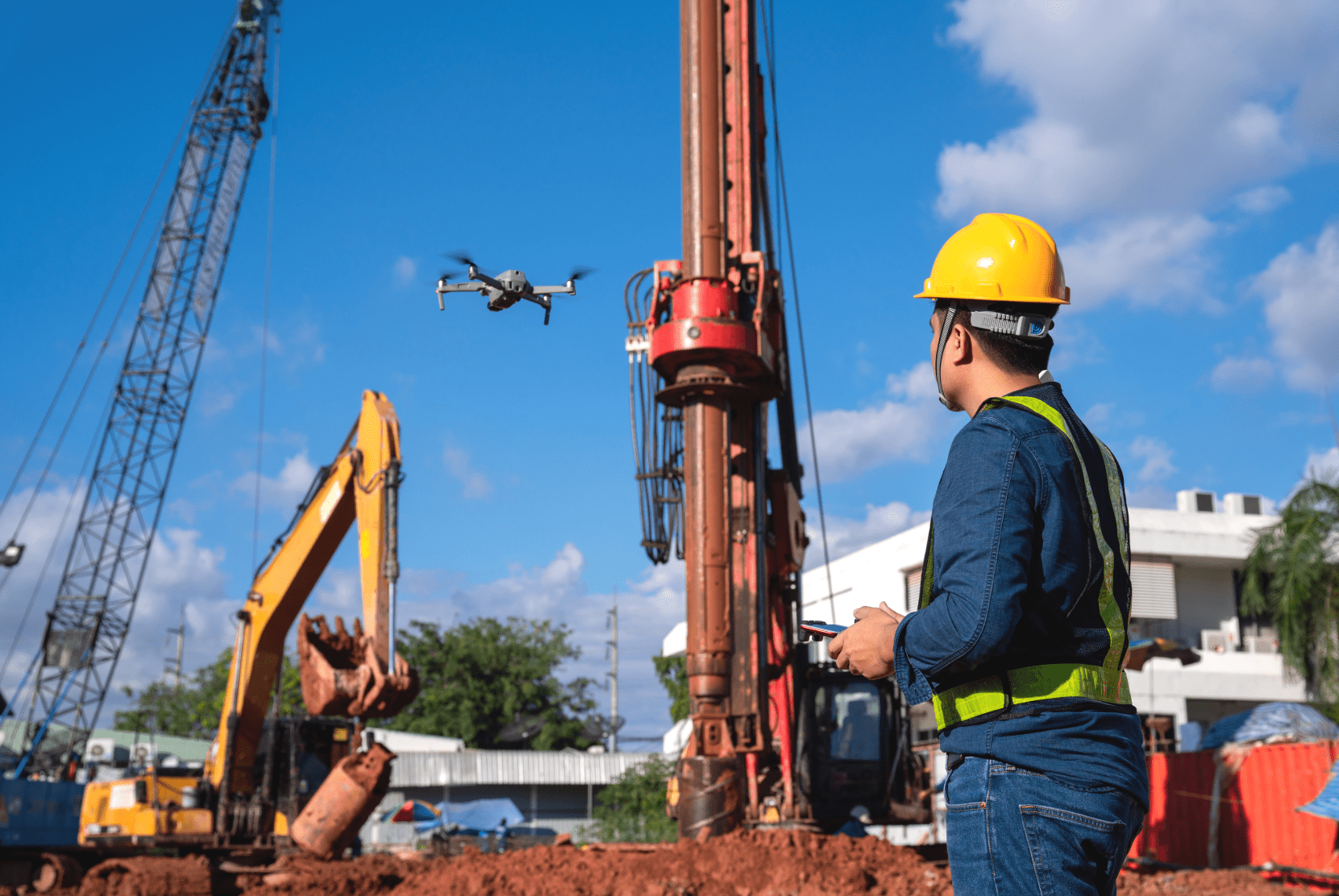Drohnen ermöglichen unter anderem bei Inspektionen bisher ungeahnte Möglichkeiten der Datengenerierung. Dabei werden je nach verwendetem Sensorsystem für hochqualitative Aufnahmen sehr große Datenmengen erzeugt. So ist es keine Seltenheit, dass unkomprimierte Bilder schnell ein Datenvolumen von mehreren Gigabyte ausmachen.
Je nach Komplexität des untersuchten Objekts sind für eine spätere Zustandsauswertung oder photogrammetrische Verarbeitung hunderte Bilder notwendig. Dass die Aufnahmen ganze Festplatten füllen können ist eher die Regel als die Ausnahme.
Oben Drohne – Unten KI
Eine hohe Qualität von erfassten Bildern, welche für spätere Auswertungen notwendig sind, bringt demzufolge auch ein hohes Datenaufkommen mit sich. Schlechte Datenqualität liefert getreu dem Motto „Garbage in, garbage out“ meist auch schlechte Ergebnisse.
Ein verbreitetes Beispiel in diesem Zusammenhang sind Fassadeninspektionen, welche die Aufnahme einer Vielzahl von Bilddaten und deren Auswertung erfordern, um z. B. Risse im Gemäuer oder Defekte an Blitzableitern zu erkennen. Um geeignete Aufnahmen zu erhalten, werden Drohnen mit entsprechender Kameraoptik eingesetzt. Dadurch spart man sich u. a. das Anmieten und den Aufbau eines Gerüsts für das Gebäude und ist in durchschnittlich weniger als einer Stunde mit der Bestandsaufnahme fertig.
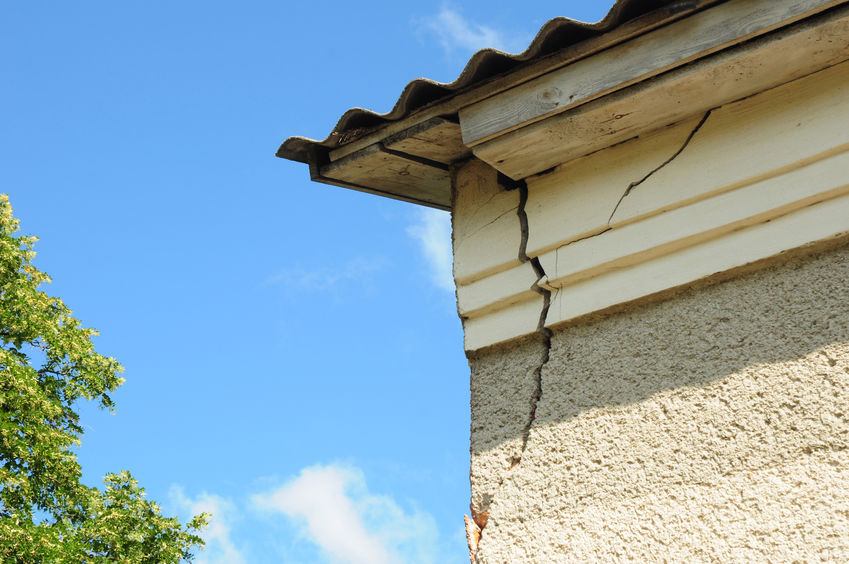
Abbildung 1: Riss in einer Fassade – für die Inspektion eines Gebäudes können leicht über 1.000 hochwertige Bildaufnahmen notwendig sein, die es danach zu analysieren gilt.
Drohne und KI: Wie lasse ich die Technik für mich arbeiten?
Bei der Analyse einer Vielzahl von Daten, wie bspw. Bilddaten, liefert Künstliche Intelligenz (KI) einen unvergleichbaren Mehrwert. Die Vorteile entfalten sich vor allem dann, wenn aus dem vorliegenden Datenbestand sehr schnell relevante Erkenntnisse, z. B. in Form von Prüfberichten, erzeugt werden sollen.
Die FlyNex Enterprise Suite schafft bei zwei Problemen Abhilfe. Sie bietet von Haus aus unbegrenzten und sicheren Speicherplatz, um die Verarbeitung zu erleichtern und zu beschleunigen. Darüber hinaus können die erfassten Bilder mit Analyse- oder KI-Software verbunden und die Verarbeitungsschritte der Bilder beliebig erweitert werden.
Wo setze ich Künstliche Intelligenz bei unbemannten Luftfahrtsystemen ein?
Insgesamt sind den Anwendungsfällen von KI keine Grenzen gesetzt, wenn es um die Erkennung von Objekten oder Schäden auf vielen Bildern geht. Sobald eine manuelle Auswertung aufgrund der Datenmenge sehr viel Zeit in Anspruch nimmt, lohnt sich der KI-Einsatz. Dies ist vor allem im Bereich der Fehlerdetektion bei Inspektionen im Energiesektor der Fall, beispielsweise bei der regelmäßigen Kontrolle von Leitungsnetzen.
Auch bei Infrastrukturinspektionen oder Immobilien im Rahmen der umfassenden Dokumentation der Verkehrssicherungspflicht sowie bei Zustandsinspektionen, z. B. Schäden auf Hausdächern, an Fassaden oder Blitzableitern, kommt Software mit einer KI-basierten Bildanalyse regelmäßig zum Einsatz.
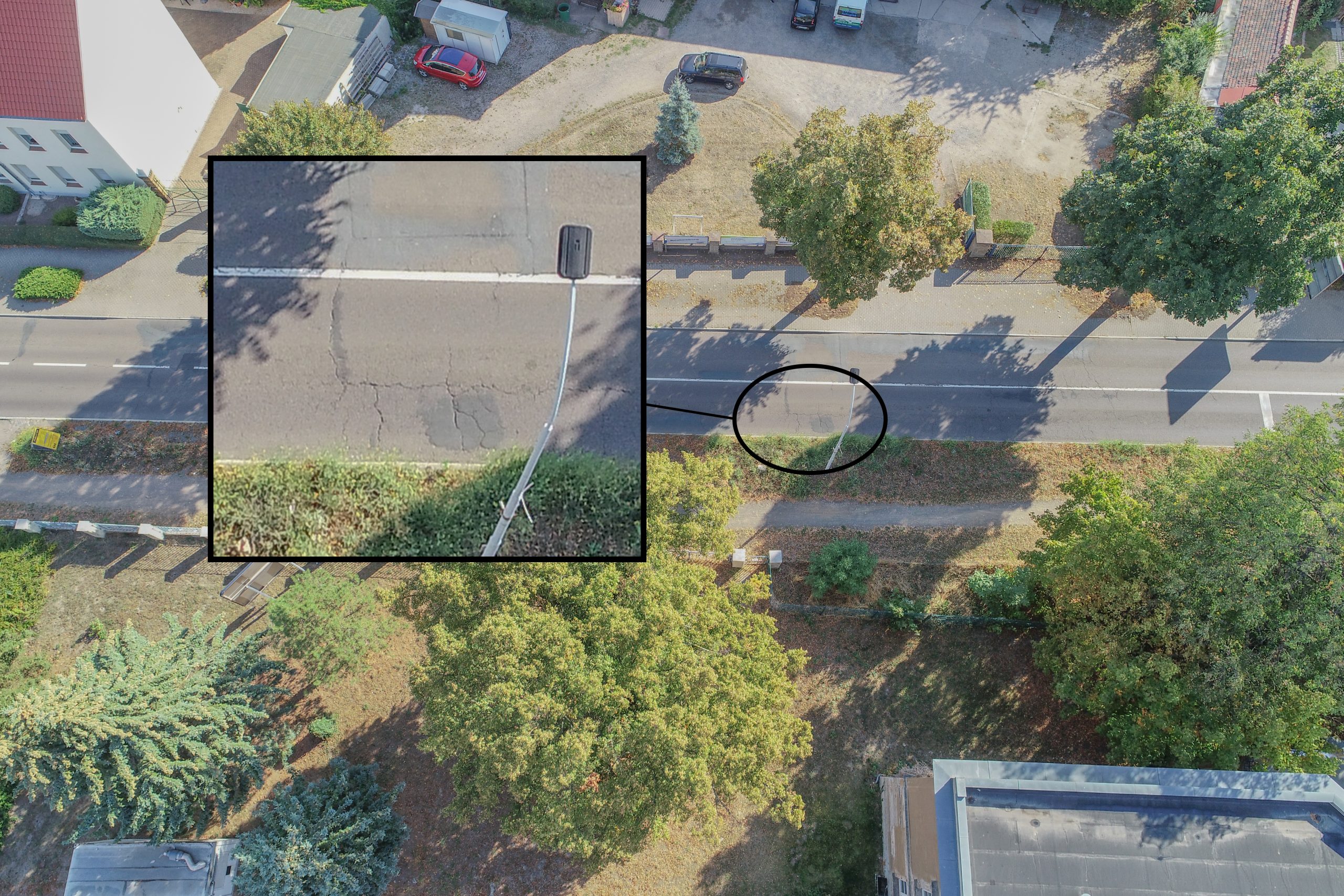
Abbildung 2: Straßenschäden – Bildrechte: ProCopter GmbH
Beim Thema KI begegnen uns nach wie vor viele offene Fragen. Im Bereich der Datenanalyse ist sie – richtig eingesetzt – ein unverzichtbares Mittel für schnelle und akkurate Ergebnisse.
Um hier fachkundig das Thema zu verstehen, haben aus dem Umfeld der Fraunhofer-Gesellschaft den DENKweit CEO und KI-Experten Dr. Dominik Lausch eingeladen, um mit ihm zum Thema Künstliche Intelligenz und neuronale Netze bei der Datenverarbeitung zu sprechen.

Was macht DENKweit im Bereich Künstlicher Intelligenz und wie seid ihr auf die Idee gekommen?
Wir haben DENKweit 2018 gegründet und sind aktuell ein Team aus 16 Mitarbeitern, darunter sechs KI-Programmierer. Wir versuchen das Thema KI für Anwender so einfach wie möglich nutzbar zu machen. Bezogen auf den möglichst unkomplizierten Einsatz unserer Produkte haben wir dabei mit FlyNex viel gemeinsam. Ich habe damals bei einem Solarunternehmen in einem Projekt zur Bilderkennung gearbeitet. Dieses Projekt ist leider gescheitert. Der Grund lag in der Herangehensweise, wie ein Objekt erkannt werden soll. Man hat sich damals aufgrund fehlender bzw. nicht ausgereifter Technologien für linear vorgehende Algorithmen entschieden. Ein Verfahren, welches sehr aufwändig, fehleranfällig und wenig effektiv ist. Mit dieser leidvollen Erfahrung haben wir uns bei DENKweit von Anfang an darauf konzentriert, die Objekterkennung mit KI zu automatisieren, auch ohne, dass der Anwender Vorwissen im Bereich KI benötigt.
Was reizt dich denn besonders am Thema KI?
KI ist für mich eine Technologie, die unseren Alltag sehr erleichtern wird. Daher bin ich davon so fasziniert. Sie löst Probleme, die wir teilweise auch schon vorher lösen konnten, aber nun sind wir in der Lage, dies schneller, besser und genauer zu machen. Inwiefern KI uns eine neue Welt eröffnet, wird sich noch zeigen. Aber eins ist klar: Sie wird insbesondere in der Industrie zunehmend an Bedeutung gewinnen, da sie Prozesse einfacher, schneller und vor allem kostengünstiger macht.
Was versteht man eigentlich genau unter KI? Und welchen Mehrwert liefert KI bei der Datenanalyse?
Zunächst möchte ich sagen, dass KI zwar viel kann, aber wie so oft im Leben auch kein Allheilmittel darstellt. Im Bereich der Bilderkennung sind KI-basierte Technologien, ganz speziell künstliche neuronale Netze, konkurrenzlos. Das heißt, immer wenn es darum geht, auf Bilddaten bestimmte Objekte zu erkennen, führt an KI eigentlich kein Weg vorbei.
Insbesondere dort, wo sich Daten ändern können, kann ein Einsatz einer KI sehr leistungsfähig sein. Wenn man z. B. an einen defekten Strommast denkt, dann gibt es einerseits viele unterschiedliche Typen von Strommasten und weiterhin kann der Hintergrund der Drohnenaufnahme je nach Jahreszeit variieren. Im Herbst kann ein darunterliegendes Feld den Mast vor einem dunklen und im Sommer eher vor einem grünen Hintergrund zeigen. Hierbei muss eine KI weiterhin den Strommast und seine möglichen Defekte erkennen können. Das ist nicht einfach, aber mit dem Einsatz richtiger Technologien machbar.
Die Vielfalt und der Mehrwert von KI-Systemen ist auch der Antrieb unsere Technologie immer weiter zu verbessern und das man bspw. mit so wenigen Ausgangsdaten wie nur möglich ein exzellentes Ergebnis erreichen kann. Einer der größten Mehrwerte ist letztendlich, dass KI-Systeme 24 Stunden am Tag präzise arbeiten können.
Wie funktioniert denn KI? Und ist Künstliche Intelligenz wirklich intelligent?
Im Gegensetz zur linearen Programmierung, die ich eingangs erwähnte, ist der Vorteil einer KI, dass sie sich ihren Lösungsweg selbst sucht. Ich als Anwender sage ihr, was ein Zebrastreifen ist, und zwar mehrmals anhand verschiedener Bilder. Ganz konkret muss ich der KI auf verschiedenen Bildern einen Zebrastreifen markieren. Irgendwann ist sie selbst in der Lage auf allen zu analysierenden Bildern die Zebrastreifen eigenständig zu erkennen und zu markieren.
Normalerweise ist der Weg der KI zum Ziel immer eine Black Box. Wir haben Technologien entwickelt, um zu erkennen, wo und „womit“ eine KI den Zebrastreifen erkennt. Dieser bedienen wir uns auch um die KI zu optimieren.
Ist eine KI intelligent? Ein gutes Beispiel ist eine Fußgängerampel. Wenn neben mir jemand bei Rot an der Ampel stehen bleibt, weiß ich auch nicht, ob er es macht, weil er die rote Farbe sieht, weil er sieht, dass das Licht oben an ist oder weil die Ampel ein akustisches Signal abgibt.
Kurz gesagt: Die KI ist nicht intelligent, sondern sie beruht zu großen Teilen auf statistischen Betrachtungen. Allerdings kann sie dem Menschen eine Intelligenz suggerieren, da sie sich den Weg zum Ziel selbst gesucht hat bzw. sucht. Ohne hier in tiefe Diskussionen zu kommen, ist KI sachlich betrachtet Mathematik und dabei vor allem sehr viel Statistik.
Die teilweise Komplexität in der Funktion, die aber für die Anwendung eigentlich nicht notwendig ist, sorgt auch für hohe Preise am Markt. Das ist ein Grund, weshalb viele Unternehmen noch davon absehen KI-Projekte anzugehen. Wir wollen hier einen möglichst einfachen Zugang bieten. Daher sehe ich große Synergien mit dem Motto von FlyNex von den Vorteilen von Drohnen zu profitieren – und warum nicht Drohnen und KI gemeinsam einsetzen?
Kannst du uns kurz sagen, was eure KI so besonders macht?
Der Umgang mit unserem System ist sehr einfach. Man muss in einem Bild nur das Objekt markieren, welches man erkennen möchte und unsere KI wird je nach Anwendungsfall mit wenigen Bildern auf das Problem, den Fehler oder etwas zu Erkennendes optimiert. Beim Thema Rechenleistung braucht man sich bei uns keine Sorgen machen. Die Prozessierung geschieht auf Fraunhofer-gesicherten Cloudservern mit sehr viel Rechenleistung, sodass in kürzester Zeit die Auswertungen zur Verfügung stehen. Im Bereich der Qualitätssicherung von Solarzellen muss unsere KI z. B. in der Lage sein, einen Defekt innerhalb von 50 Millisekunden mit fast perfekter Genauigkeit zu erkennen. Ich denke das unterstreicht die Leistungsfähigkeit unserer KI-Technologien.
Wir danken Dr. Dominik Lausch herzlich für das spannende Interview.
Bei Fragen rund um das Thema Drohne, Datengenerierung oder Datenanalyse, melden Sie sich jederzeit gern bei uns.
Ihr FlyNex Team
Die Fragen stellte Michael Petrosjan, Gründer und CFO FlyNex GmbH.
Kontakt:
info@flynex.de
Tel.: +49 (0) 341 331 760
